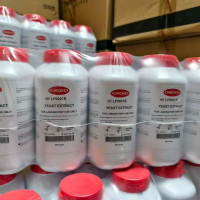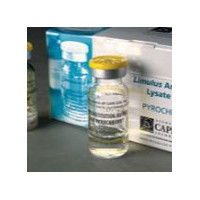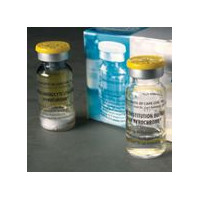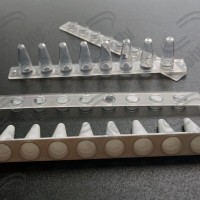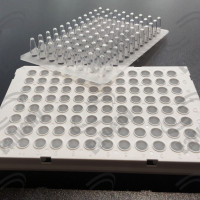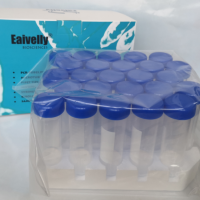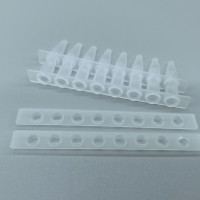Introduction
Stem cells are undifferentiated cells that have the ability to differentiate into
specialized cell types. Hematopoietic stem cells (HSCs) are derived from mesoderm and are located in the red bone marrow. HSCs differentiate and give rise
to myeloid, erythroid, and lymphoid lineages of cells, which further differentiate
into specialized blood cells. Lineage development of HSCs involves interactions
between cytokines, growth factors, and chemokines, which are considered as
important lineage-specific markers. Lymphoid lineage-related markers such as
IL-3, IL-6, IL-15, TGF-β1, SCF, LIF, and CXCL12 (SDF-1) help lymphoid progenitor
cells to differentiate into B Cells, NK cells, T Cells and dendritic cells. Markers
such as IL-3, IL-5, IL-34, GM-CSF, M-CSF, SCF, and CXCL12 (SDF-1) are associated with the myeloid lineage and help differentiate HSCs into monocytes,
macrophages, neutrophils, eosinophils, and basophils. IL-3, IL-6, EPO, TPO, SCF,
GM-CSF and CXCL12 (SDF-1) promote the differentiation of erythroid progenitor cells into erythrocytes and platelets. Dysregulation of these lineage-specific
markers can lead to pathological abnormalities such as leukemias, lymphomas,
myelomas, phagocyte disorders, and anemias. Quantification of these markers
can help in hematopoietic stem cell research and early stage detection of various disease conditions.
The LEGENDplexTM Mouse HSC Panel (13-plex) is a bead-based multiplex assay
panel, using fluorescence-encoded beads suitable for use on various flow
cytometers. It allows for simultaneous quantification of 13 key targets involved
in hematopoietic stem cell differentiation and lineage specification, including IL34, IL-5, M-CSF, TPO, IL-6, GM-CSF, IL-15, TGF-β1, IL-3, LIF, SCF, EPO, and CXCL12
(SDF-1). This assay panel provides higher detection sensitivity and broader
dynamic range than traditional ELISA methods. The panel has been validated for
use on cell culture supernatant, serum, and plasma samples*.
*Caution: The use of serum or plasma samples with this panel may lead to a
lower than expected final bead count for the TPO bead region. The degree of
beads loss can vary between different serum/plasma sample types and mouse
strains. Therefore, we do not recommend measuring serum/plasma samples
using the TPO assay in this panel. While we have not fully characterized
the root cause of the beads loss issue, we believe that this is related to TPO
biology in serum/plasma samples. The other targets in this panel exhibit no
beads loss in serum, plasma, or cell culture supernatant samples.
The Mouse HSC Panel is designed to allow flexible customization within the
panel. It can also be divided into subpanels based on target type, listed below:
LEGENDplexTM Mouse HSC Panel (13-plex)
LEGENDplexTM Mouse HSC Lymphoid Panel (7-plex)
LEGENDplexTM Mouse HSC Erythroid Panel (7-plex)
LEGENDplexTM Mouse HSC Myeloid Panel (7-plex
-
 Currency: USD
|
Currency: USD
|
- USD (US Dollar)
- EUR (Euro)
- CNY (Chinese Yuan)
- GBP (British Pound)
- JPY (Japanese Yen)
- CAD (Canadian Dollar)
- AUD (Australian Dollar)
- SGD (Singapore Dollar)
- MYR (Malaysian Ringgit)
- TWD (New Taiwan Dollar)
- HKD (Hong Kong Dollar)
- NZD (New Zealand Dollar)
- ZAR (South African Rand)
- CHF (Swiss Franc)
- XAF (Central African CFA)
- XOF (West African CFA)
- RUB (Russian Ruble)
- BYN (Belarusian Ruble)
- KZT (Kazakhstani Tenge)
- KGS (Kyrgystani Som)
- INR (Indian Rupee)
- EGP (Egyptian Pound)
- VND (Vietnamese Dong)
- KRW (South Korean Won)
- MXN (Mexican Peso)
- ARS (Argentine Peso)
- TRY (Turkish Lira)
- SAR (Saudi Riyal)
- AED (UAE Dirham)
-
 Language|
Language|
- Promote Business |
- Medical Finance




